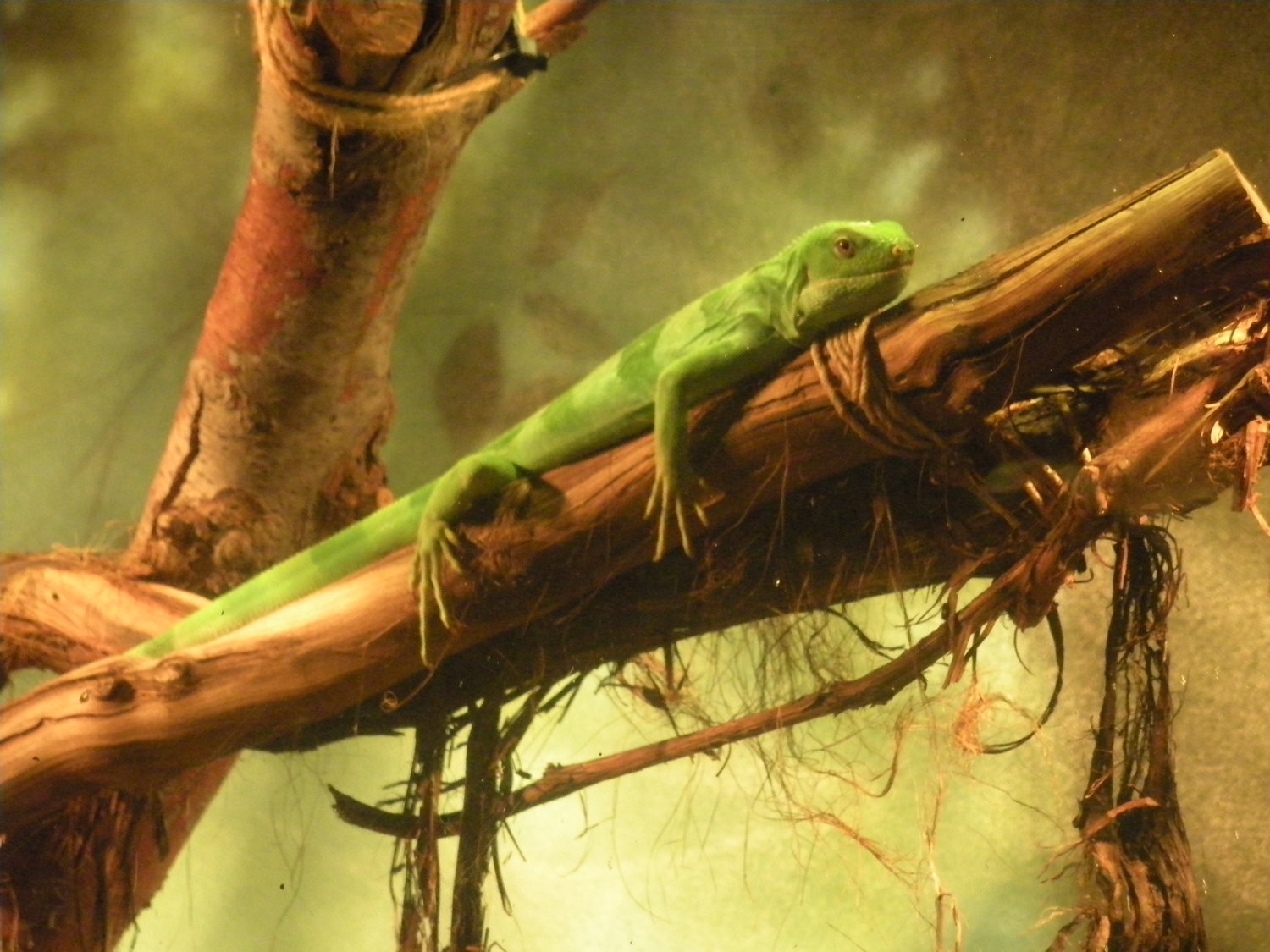The immersion begins with ones first step on the trail to the Cleveland Zoo’s RainForest, as visitors pass under the foliage-draped sign and meander down the verdant path, the sun barely piercing through the tangle of tree limbs overhead.
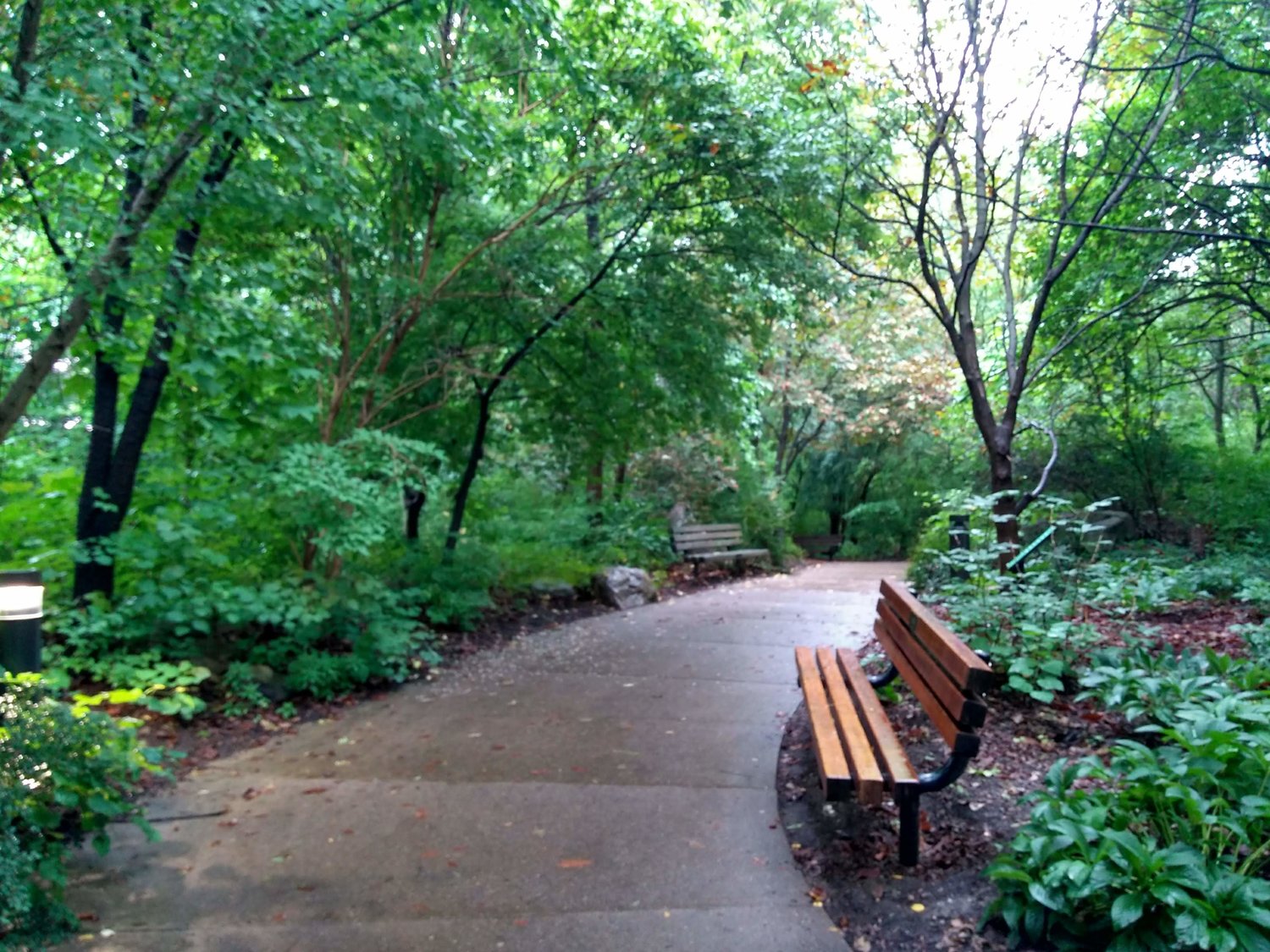
Winding along, visitors meet “Old Man of the Forest,” a life-size bronze sculpture of an orangutan by nature sculpture Tom Tischler.
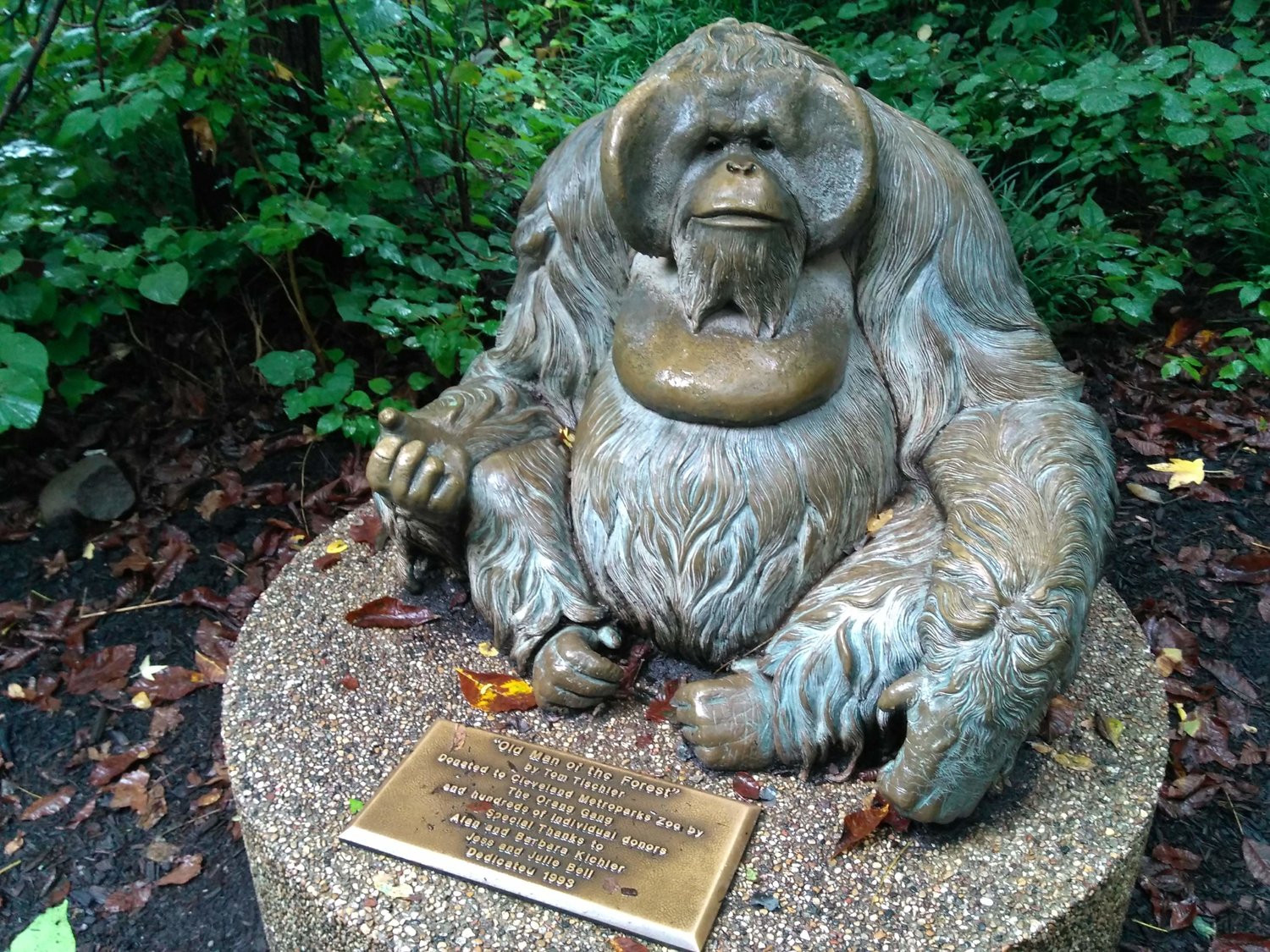
Funding for the $12,000 piece was raised by the “Orang [sic] Gang Committee.” The plaque reads: “‘Old Man of the Forest’ / by Tom Tischler / Donated to Cleveland Metroparks Zoo by / The Orang Gang / and hundreds of individual donors / Special Thanks to / Alan and Barbara Kischler / Jess and Julie Bell / Dedicated 1993”
Covering two acres and built on the site of an old foundry, the building itself is rather intriguing: sleek, brassy, and rounded; even on a cloudy day it almost seems to glow from within.

As the doors slide open, visitors are greeted with a rush of 80°F (27°C; which, depending on Cleveland’s weather, is either like opening an oven or stepping out of one) and the roar of falling water.
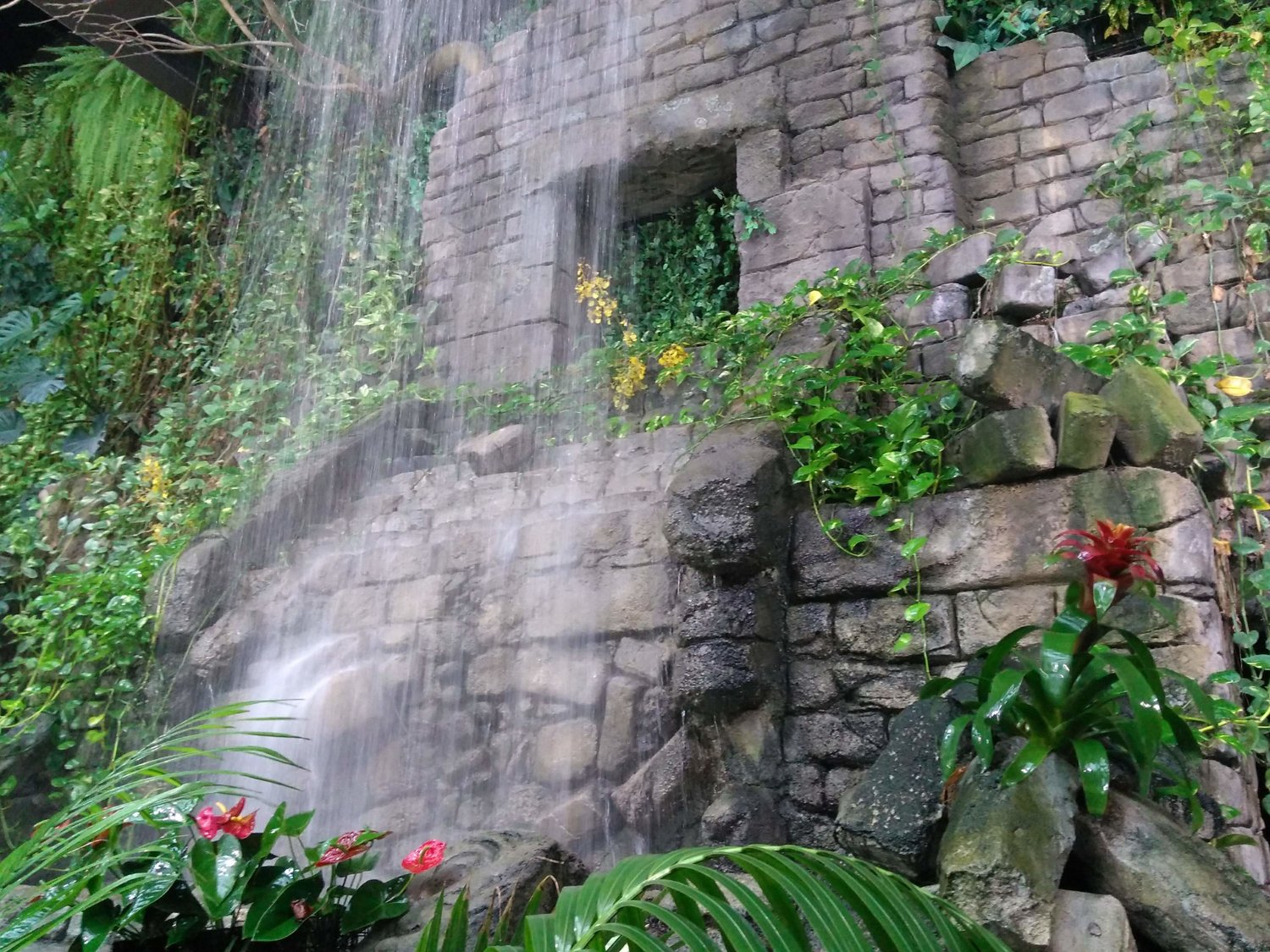
Though its 1987 beginnings and $30 million price tag were shrouded in scandal, by its 1992 opening the RainForest was acknowledged to be a genuine show-stopper. As the Zoo’s first fully-immersive exhibit, visitors immediately find themselves in a rain forest, and the waterfall is only the beginning.
In order to access the exhibits themselves, visitors must pass through the untamed wilds of the Medicine Trail, where palm trees fan the sticky air and thick vines coil around the window panes.
Fun Fact: The piped-in ambient sound effects in the RainForest were the Zoo’s first.
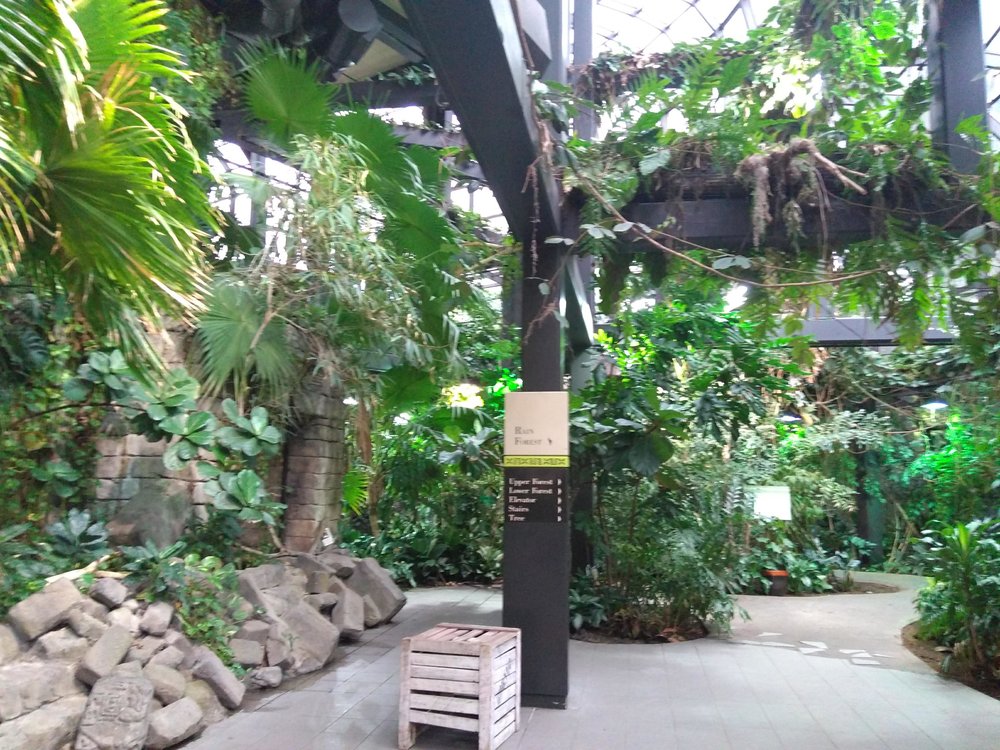
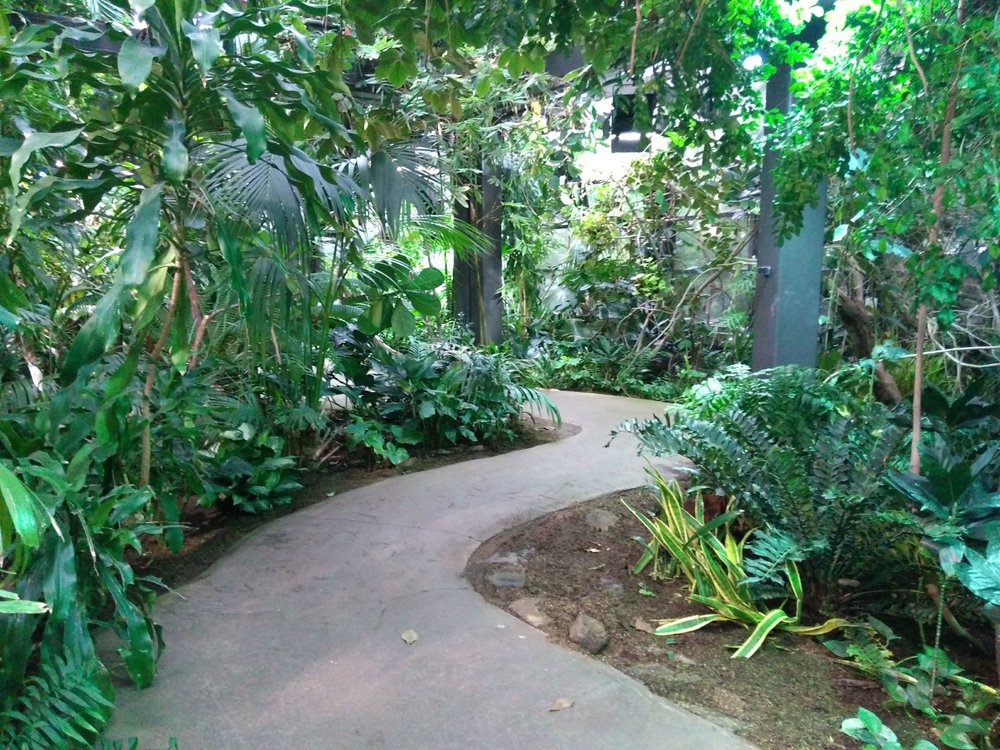
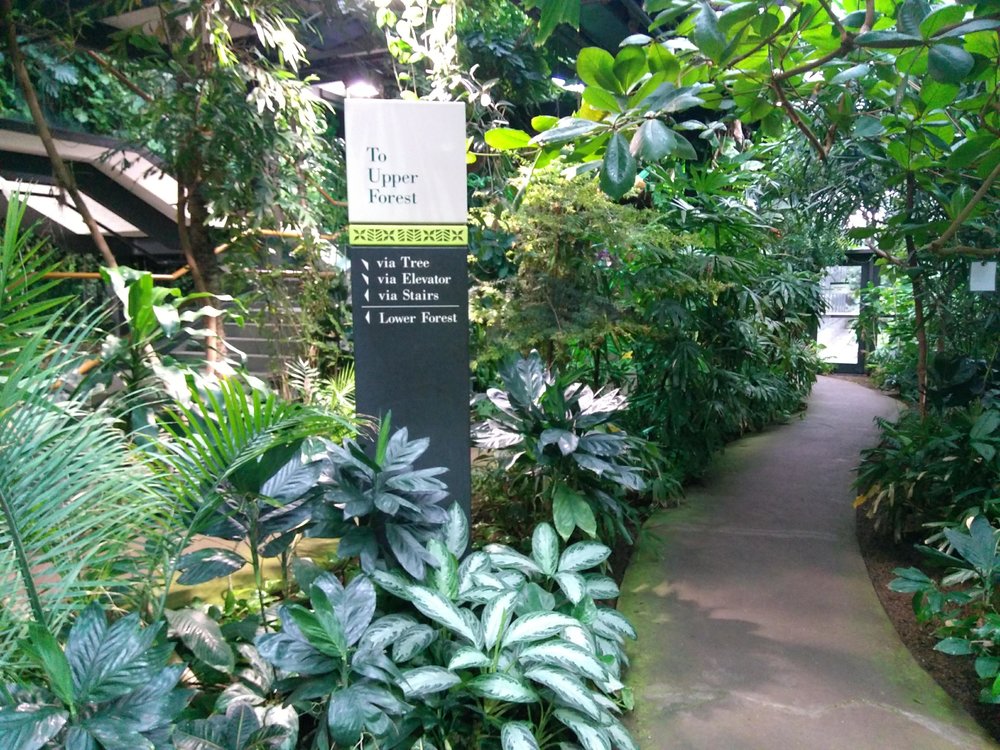
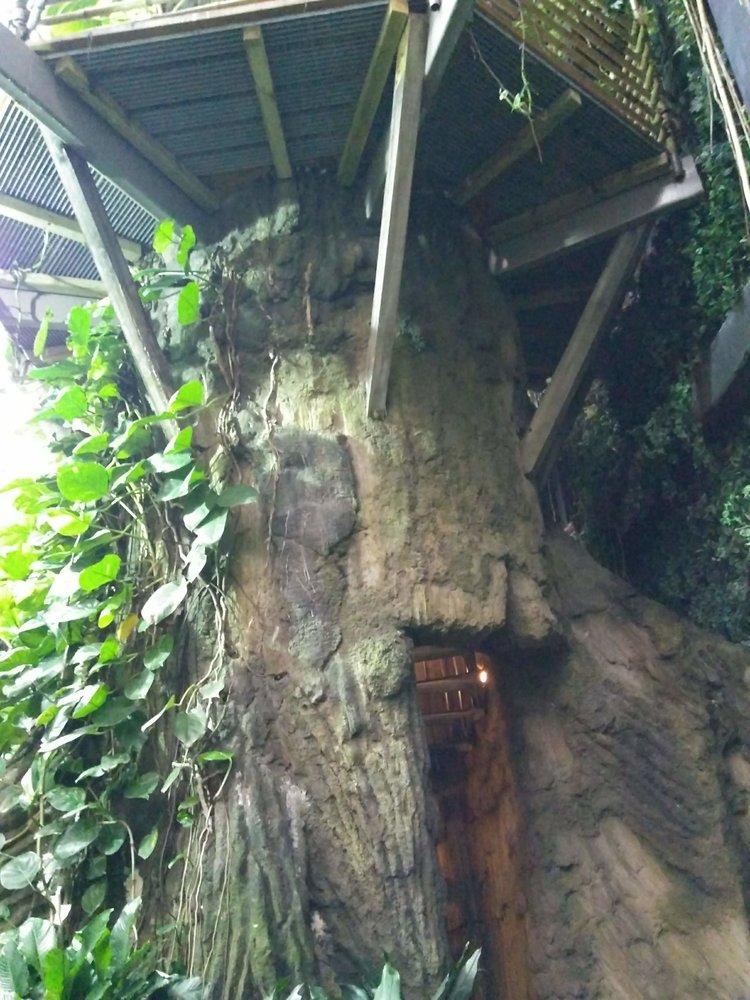
Visitors have the choice between viewing the Upper and Lower Forests first and second, as the Lower Forest empties guests out of the entire exhibit and into the gift shop it is best to see the Upper Forest first. There are several options to reach the Upper Forest: stairs, elevator, and tree. I took the tree.
Visitors are introduced to the Upper Forest with the Jungle Lab, where “Rain forest scientists work,” according to the informative sign.
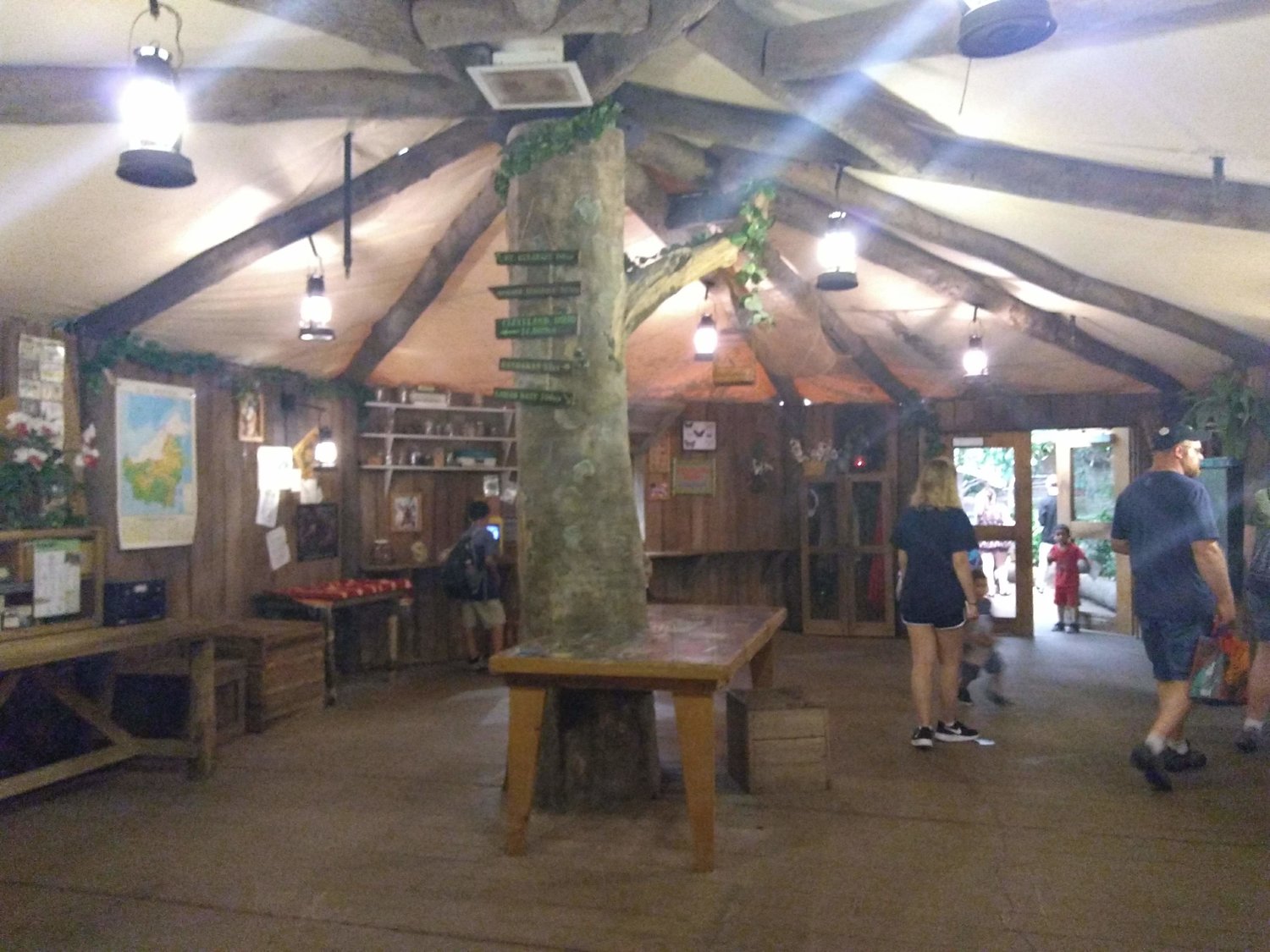
Pushing the doors open with a heavy creak, visitors find themselves in the aviary, an 8,000 square-foot (about 743 square meters) free-flight area where dozens of birds of a variety of species fly overhead. Prehensile-tailed porcupines, sloths, capybaras and an anteater provide some ground-dwelling company for us humans.
Left to right: immersive habitat; the proximity of the enclosures to the walking path makes for some close encounters; I think the animals enjoy the proximity as much as the people do; a small agouti mills about; a capybara and a giant anteater compare size; a roseate spoonbill sits high above the fray.

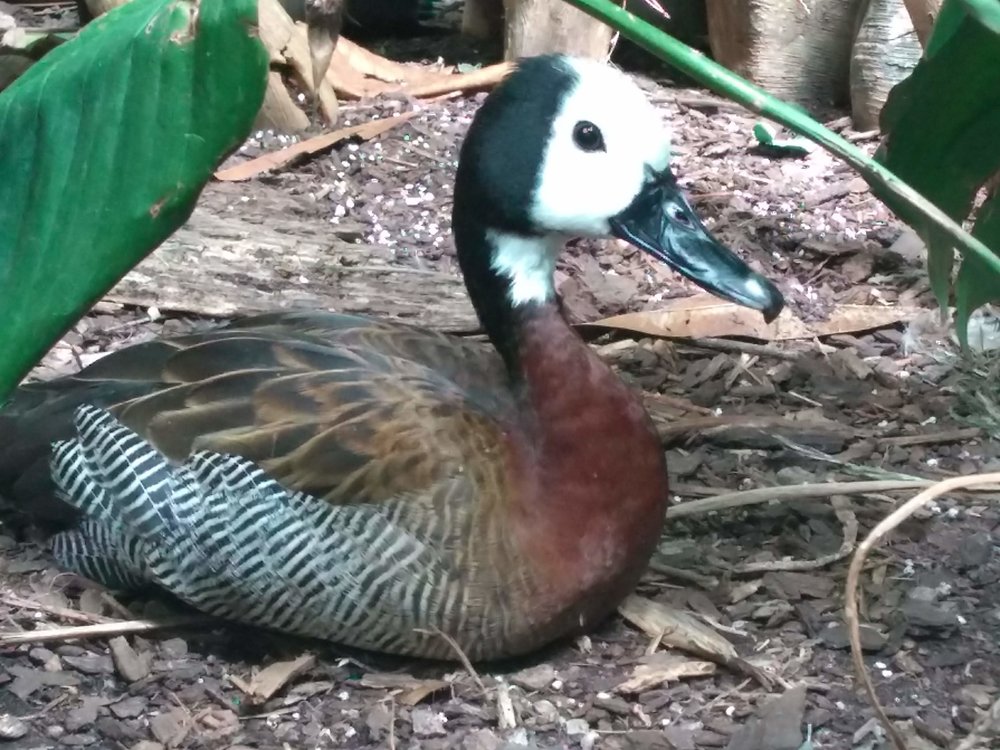
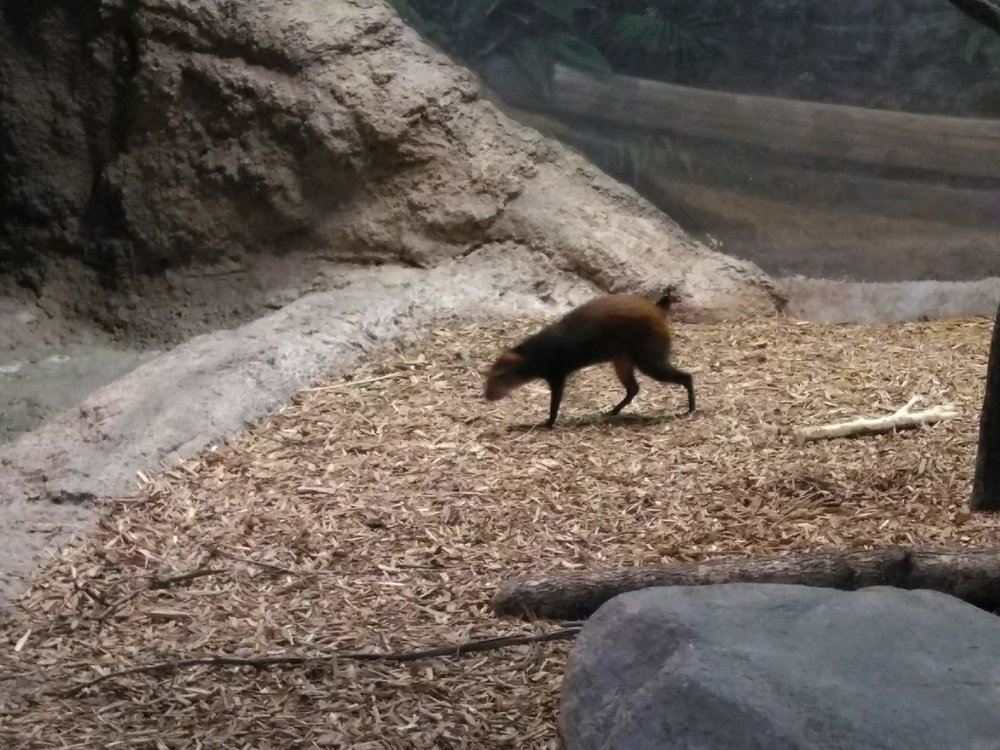
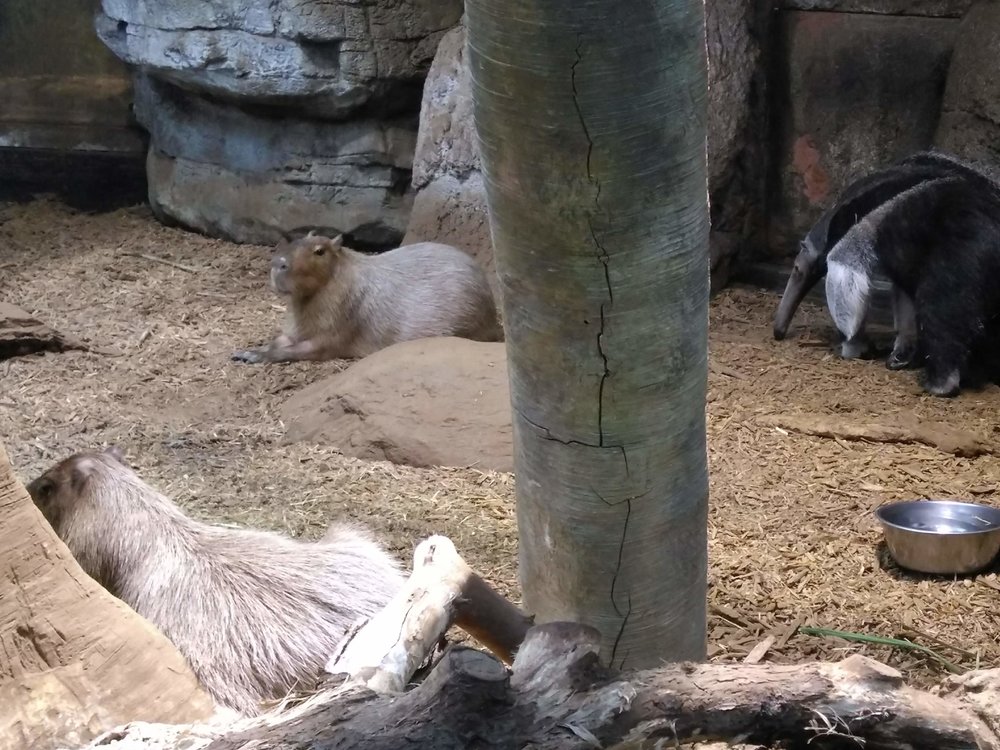
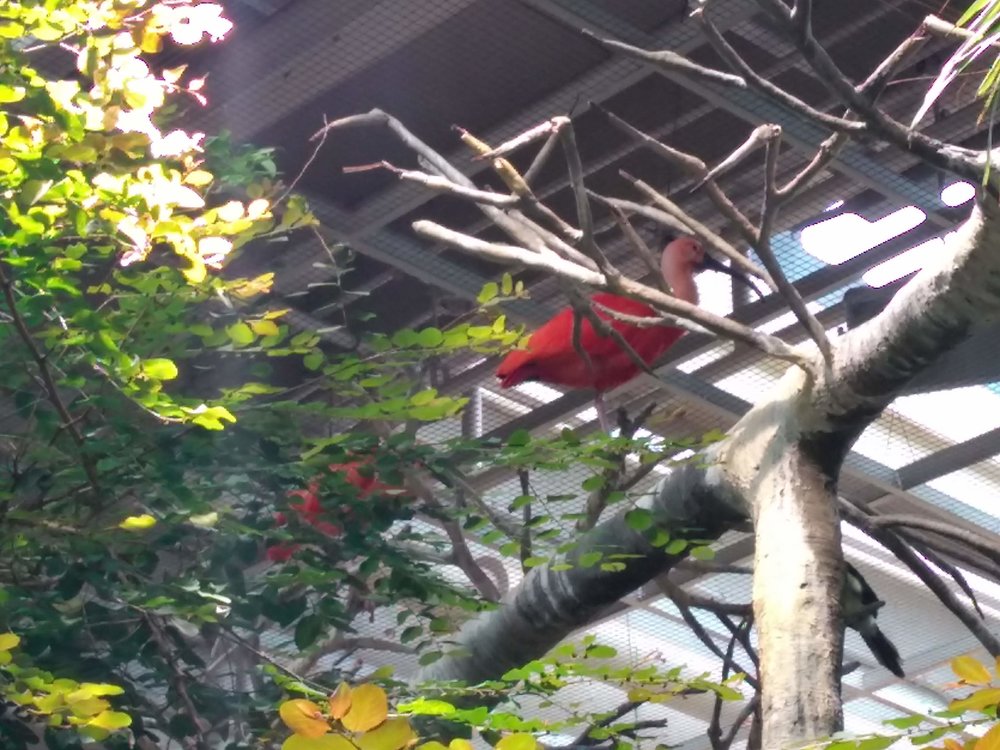
Passing through the green plastic links hanging from the ceiling (to keep the birds from flying out) takes visitors into the remainder of the Upper Forest, where not every critter is given free reign to interact with the human public.
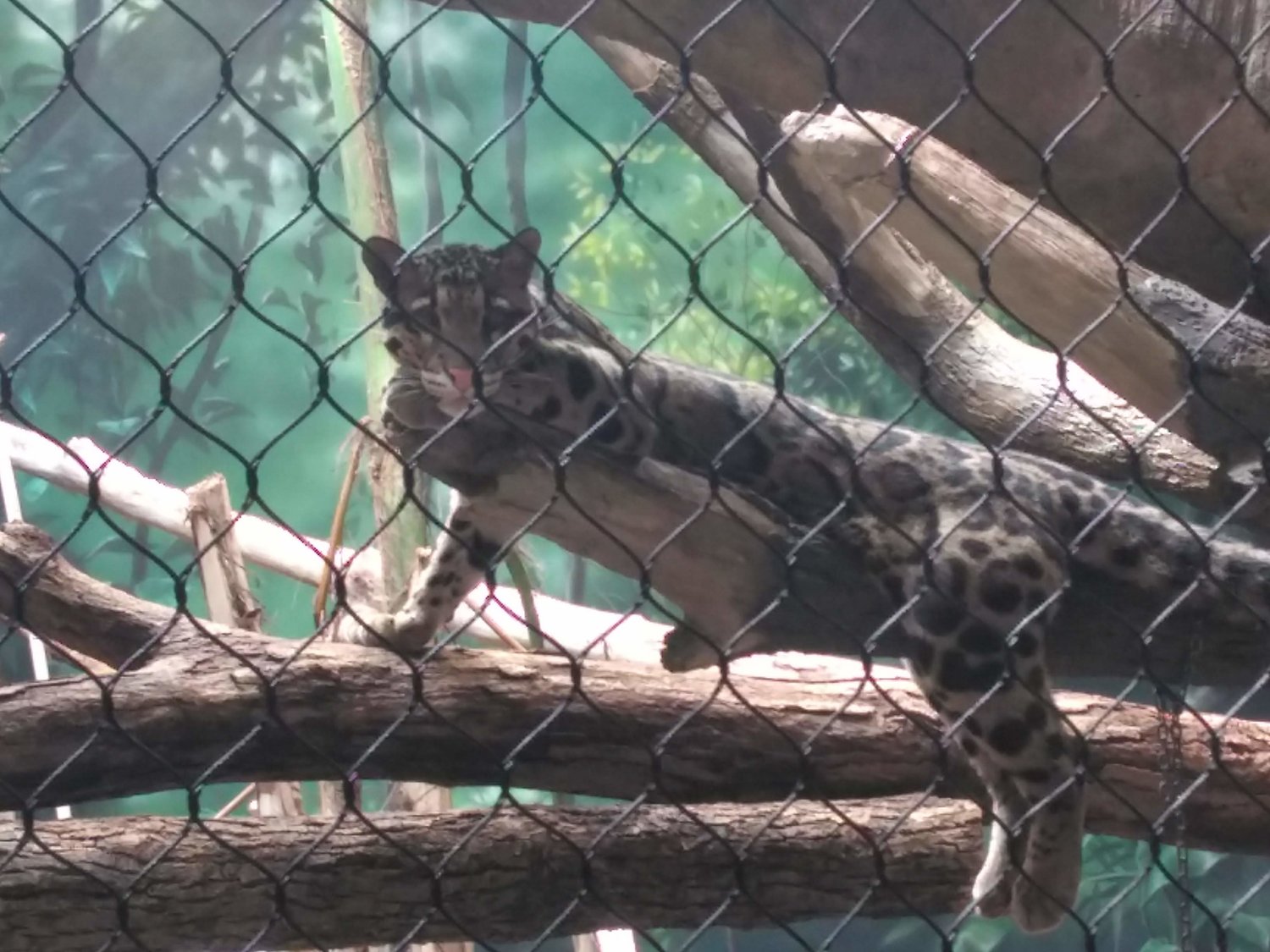
The stars of the Upper Forest are found here, in the Orangutan exhibit beneath the giant dome. A large “tree” in the center is a nod to the orangutan’s arboreal nature, and the variety of toys give them plenty of things to do. Here Merah, born at the Zoo on 5 October 2014, can be seen playing with her mother, Kera Wak, pestering her dad, Tiram, and interacting with the other females, Kayla and Kitra.
Fun Fact: Mother orangutans look after their young for anywhere between five to eight years in zoos, ten to eleven years in the wild. Only humans stay dependent longer.
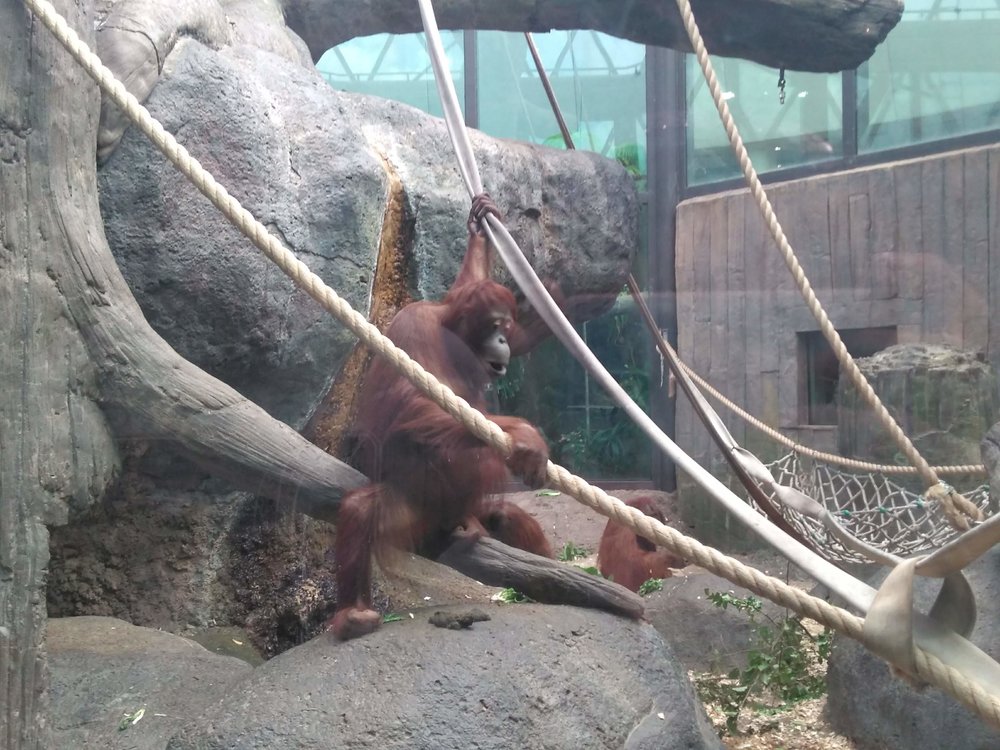
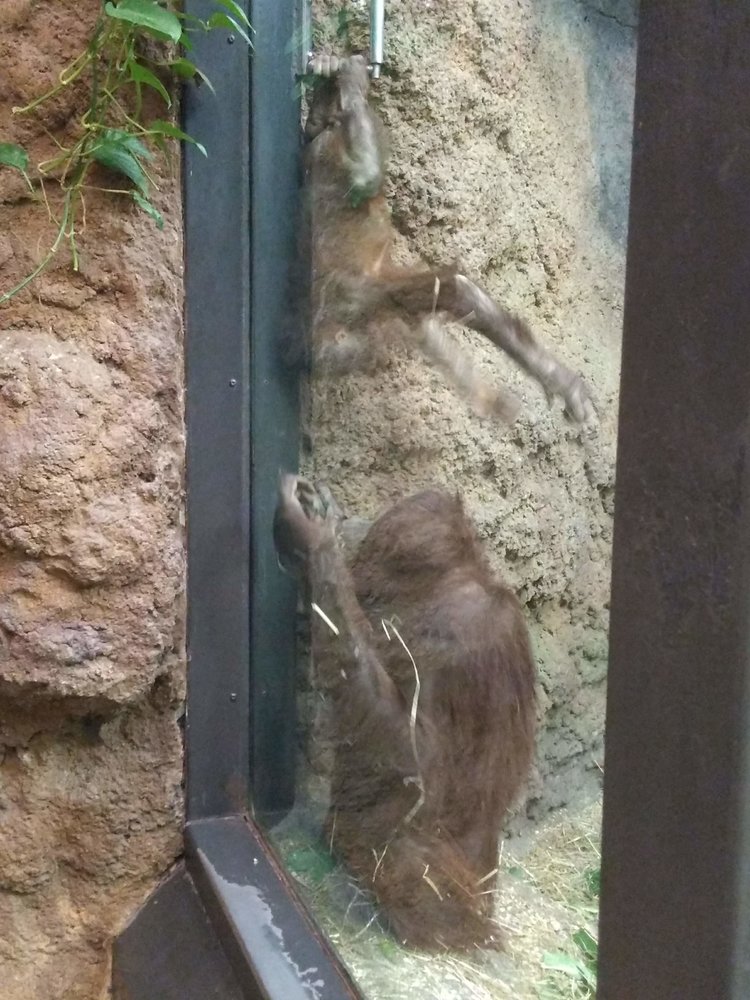
Visitors are sure to catch another favorite on the way out of the Upper Forest: a partially submerged, surf-and-turf exhibit featuring an exuberant bunch of Asian small clawed otters. They are a real joy to watch, either running, jumping, and swimming whilst calling out to one another in excited squeaks, or just lying in a pile, contentedly snoozing the day away.

Before exiting, do make sure to take note of the Upper Forest’s portion of the Francois Langur Monkey exhibit, the bottom half of which extends into the Lower Forest.
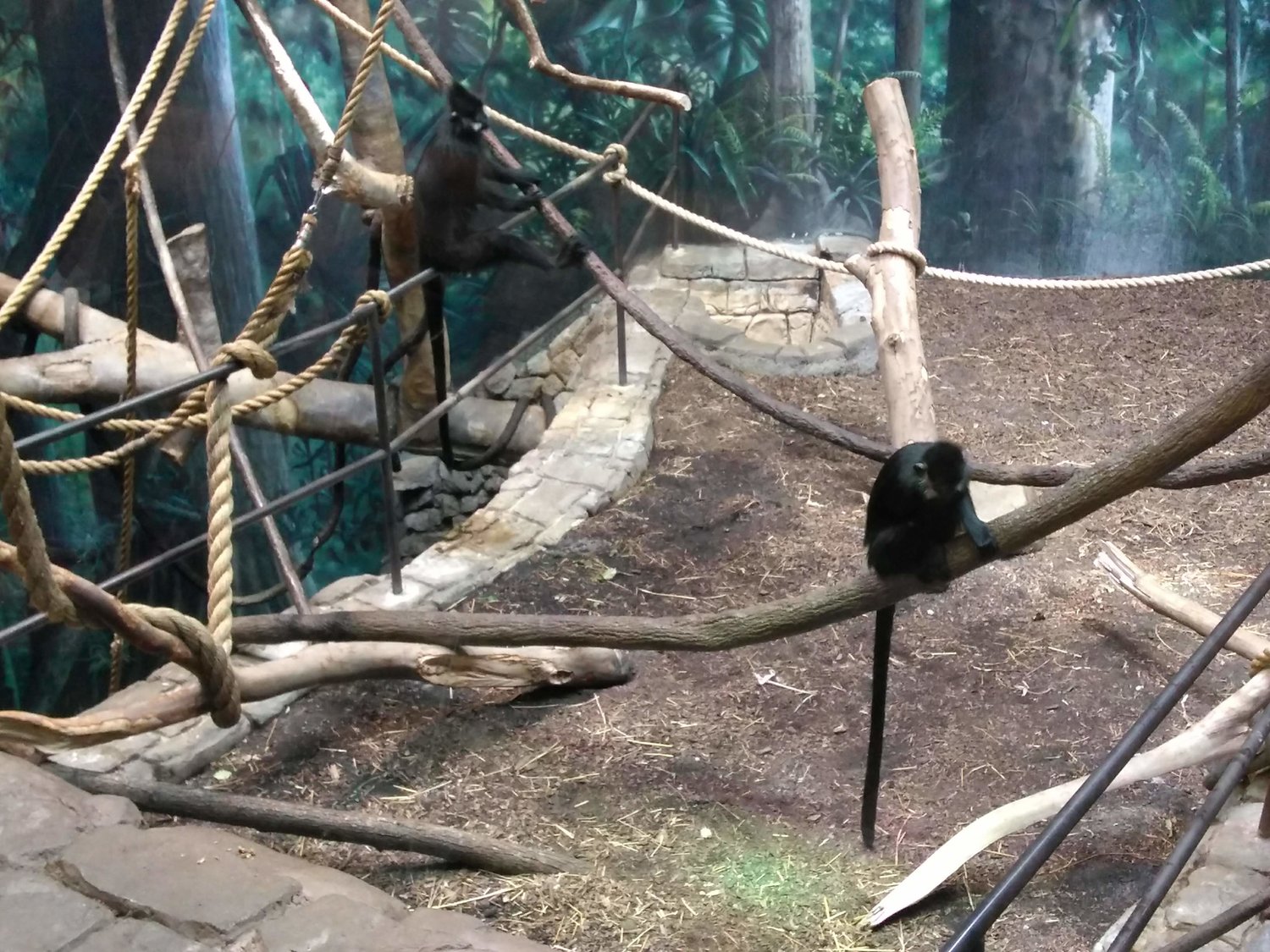
Taking the main stairs down to the Lower Forest allows for some pretty great aerial views of the “jungle” in all of its over-grown splendor:
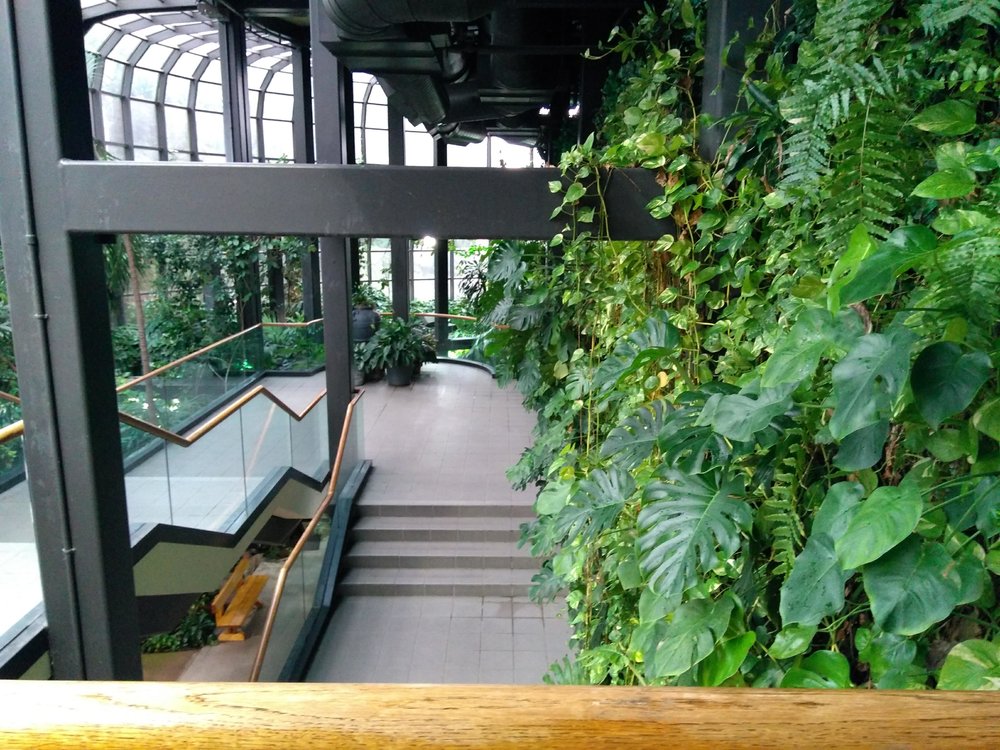

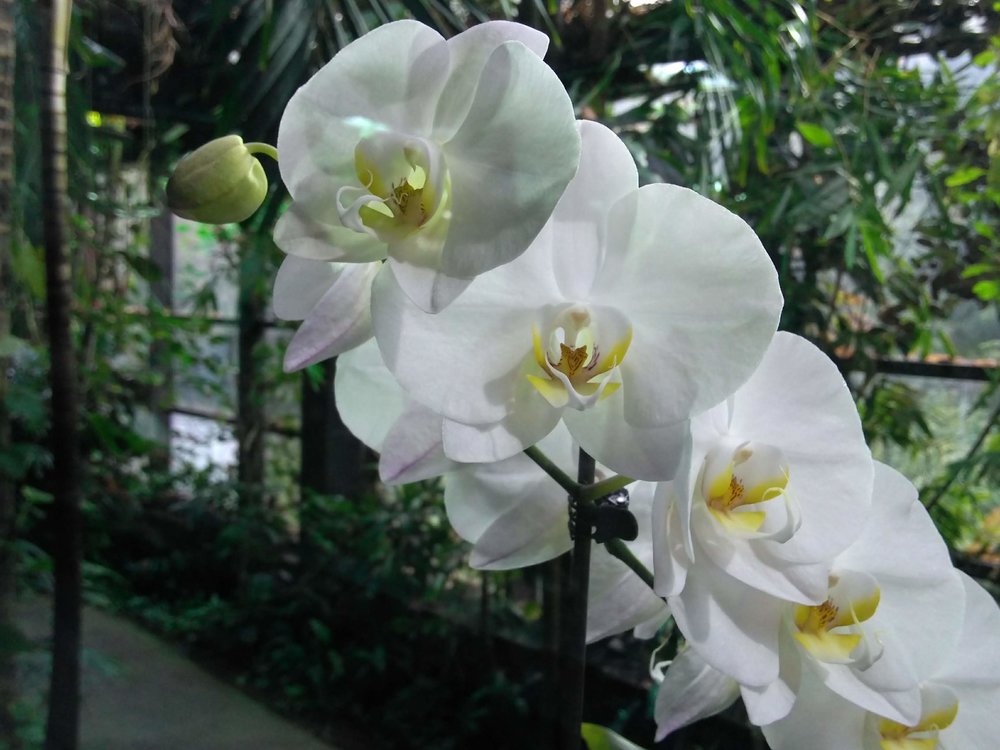
Fun Fact: There are more than 10,000 plants in the RainForest, originating in the rain forests of South America, Africa, and Asia.
The Lower Forest doors seem pretty innocuous, but the nearby terrarium and photo-op give visitors a hint at what waits on the other side.
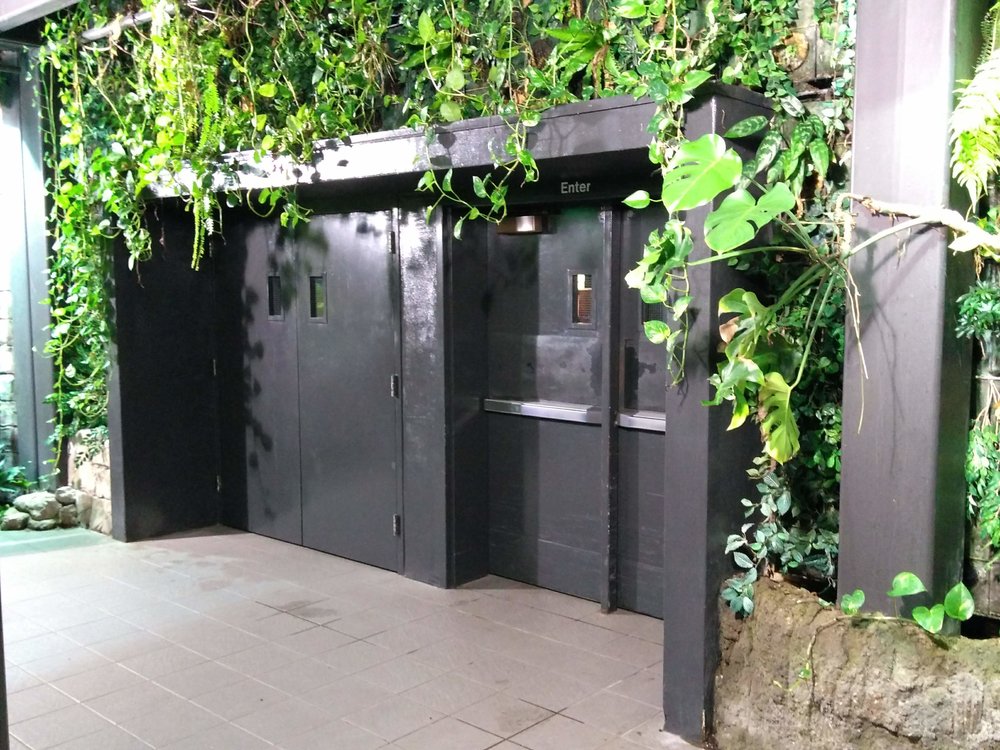
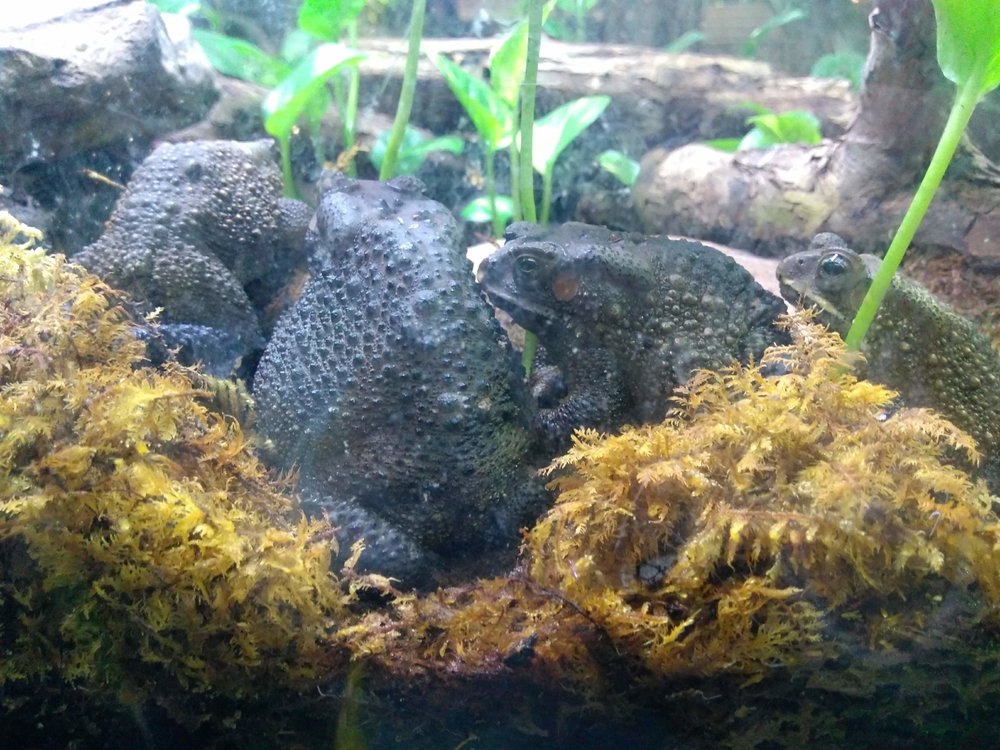
Ah yes, the creepy critters of the forest floor. The beginnings of the Lower Level could very well be rechristened “The Reptile Room” for the substantial number of amphibians occupying the glass-fronted cases.
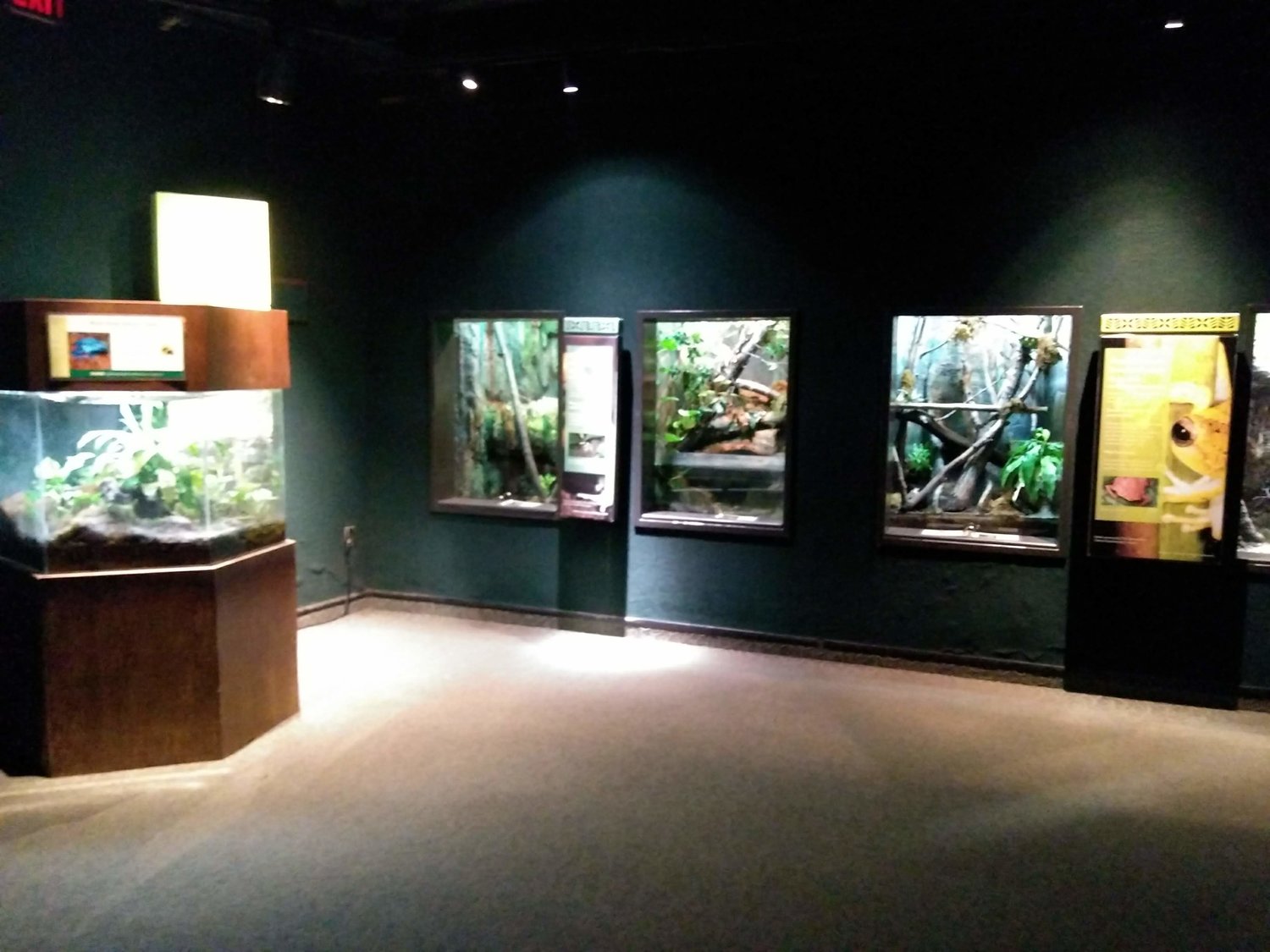
The terrariums are quite nice, looking like a perfect snapshot/still life of rain forest was cut out and placed in the case. As such, finding the occupant can be something more akin to a game of Where’s Waldo than a typical zoo-watching experience, with the same rush of excitement when spotted.
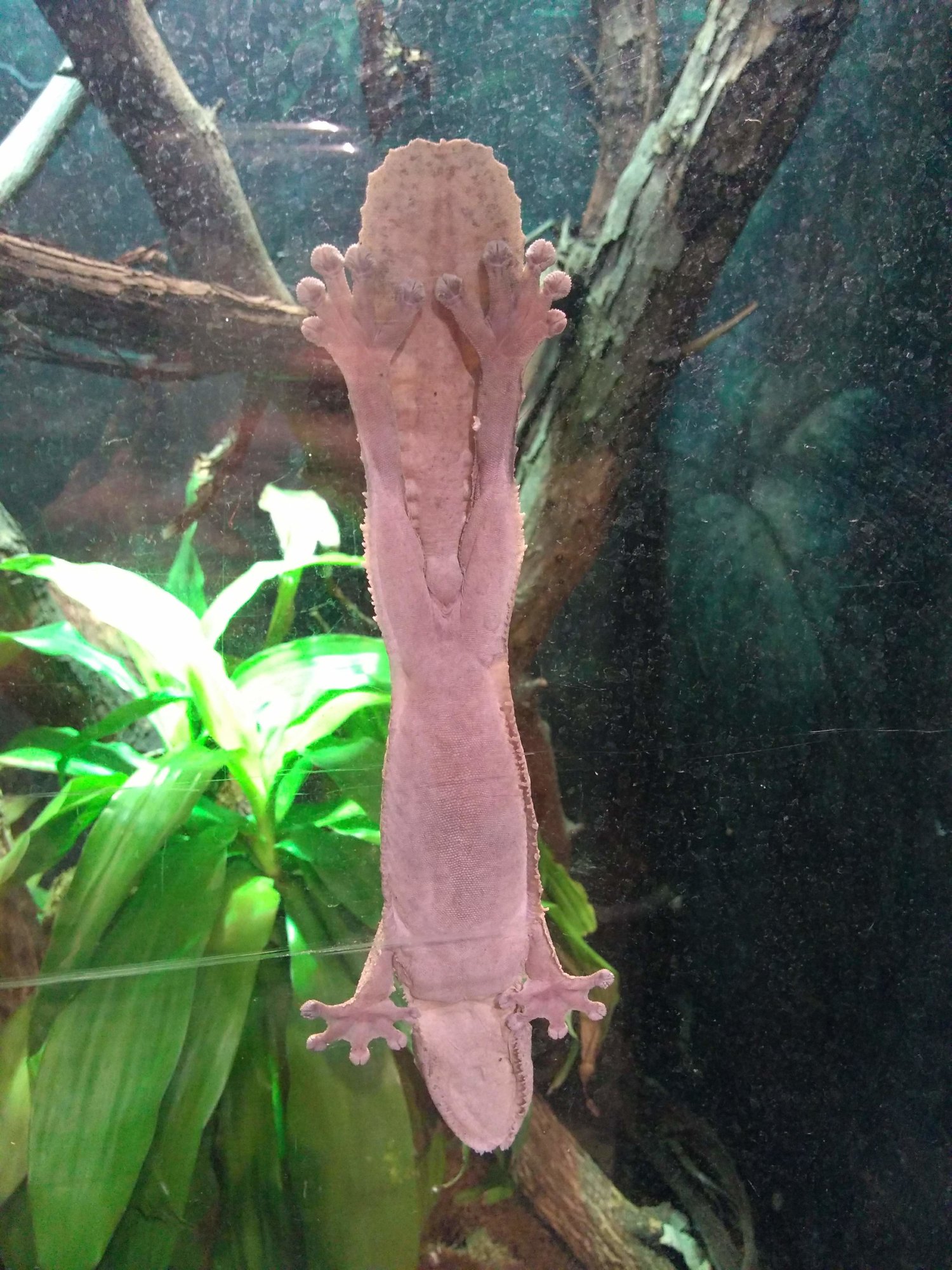
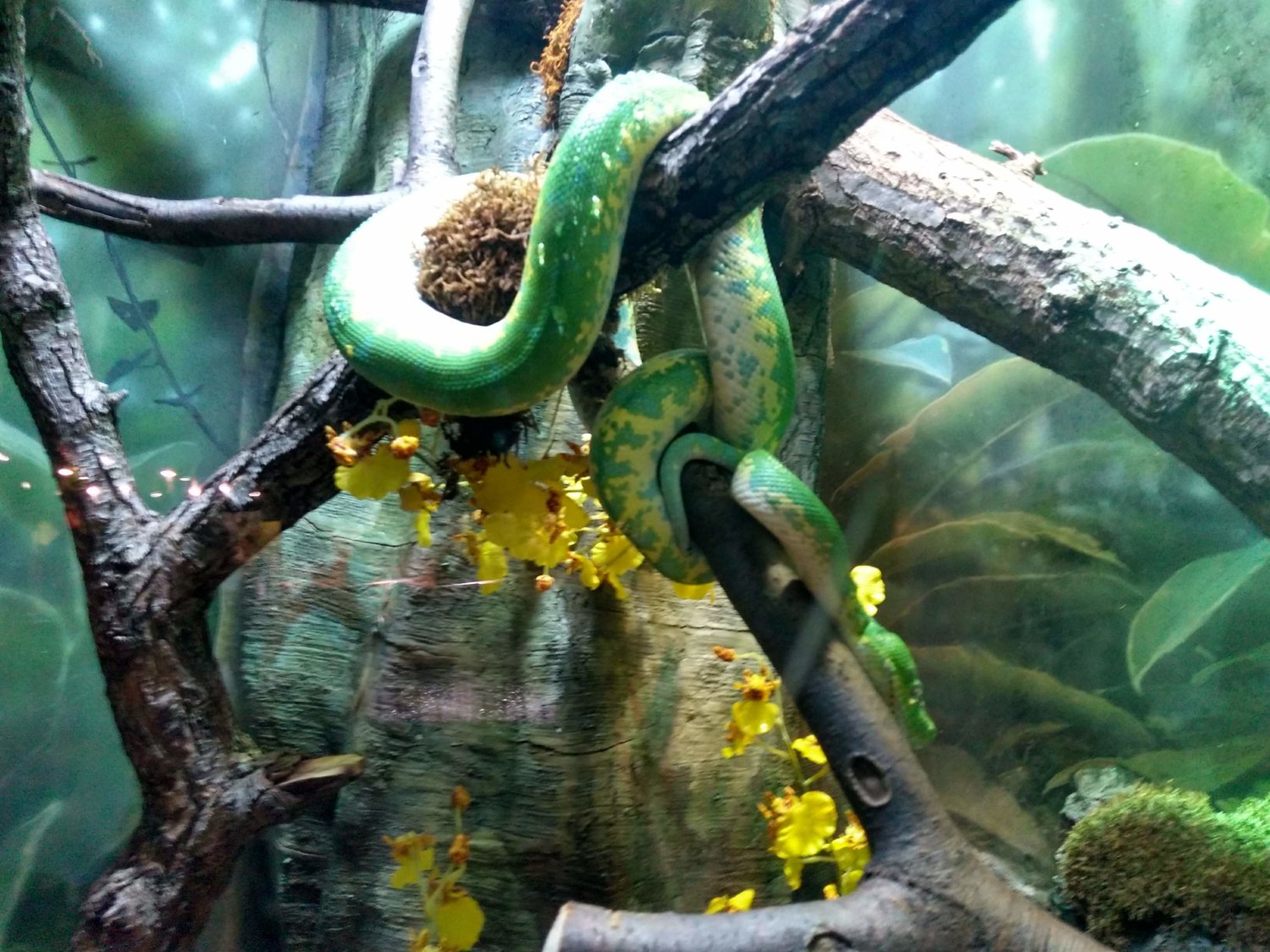
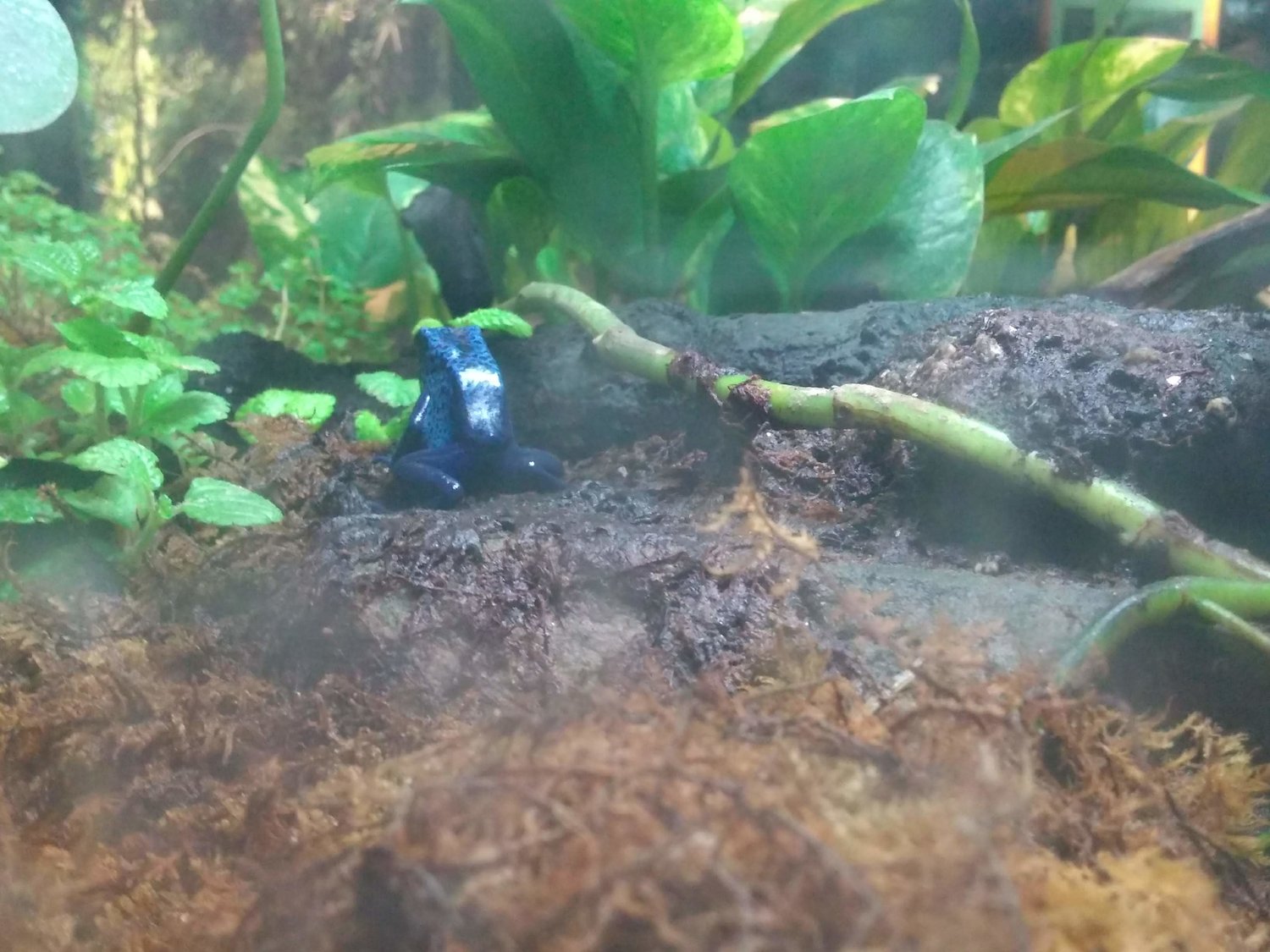
Larger displays hold bigger reptiles, who are much less easier to miss.
Left to right: dwarf crocodile; northern spider tortoise
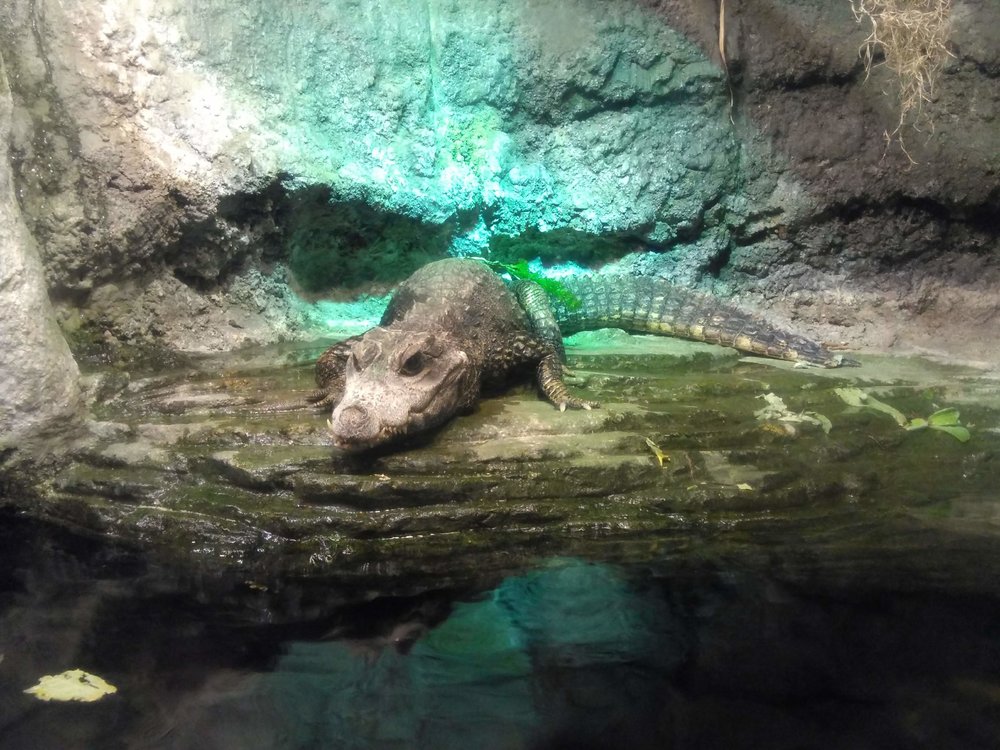
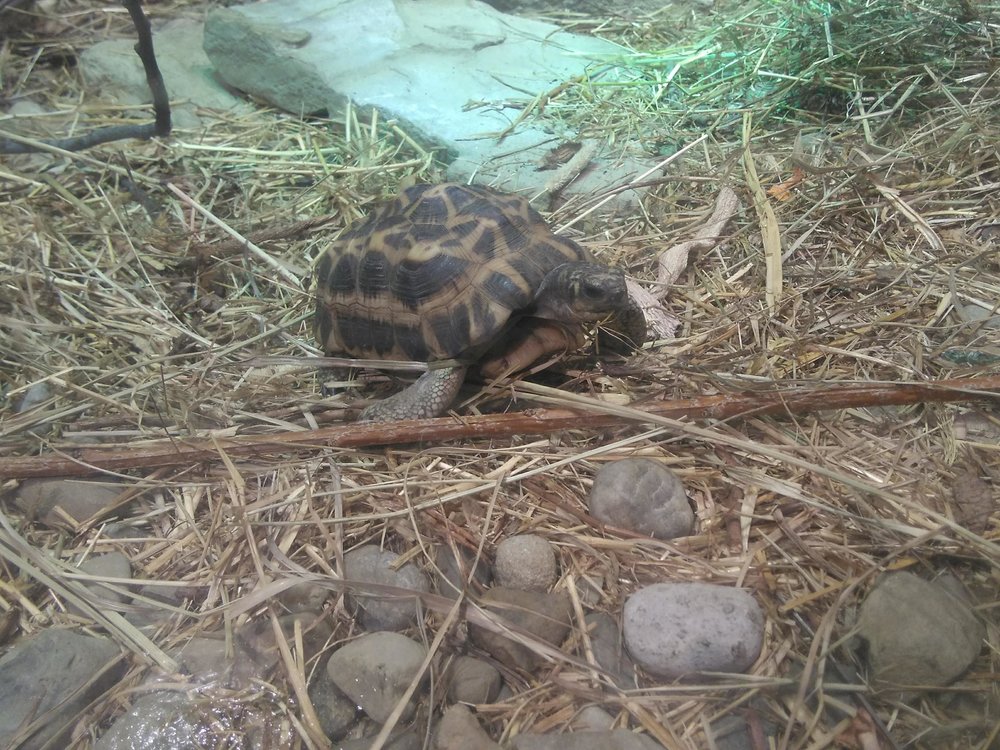
Not everyone is confined to land, either, with cuties and creepies also making an appearance.
Left to right: turtle- cutie; red-bellied piranha; tentacled snake- creepies
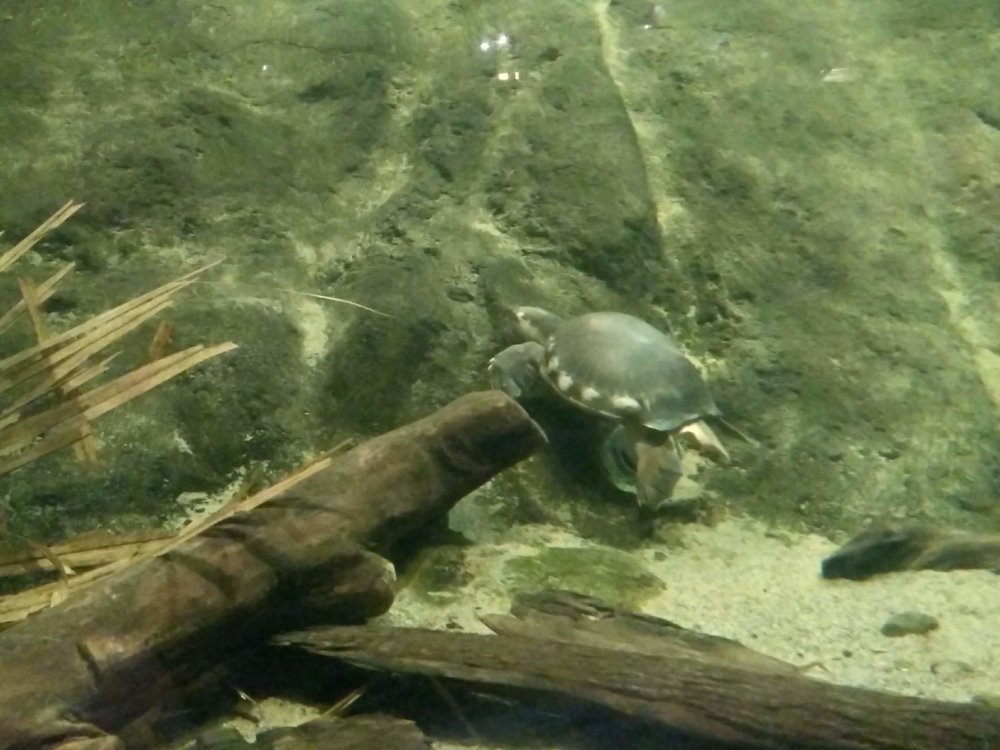
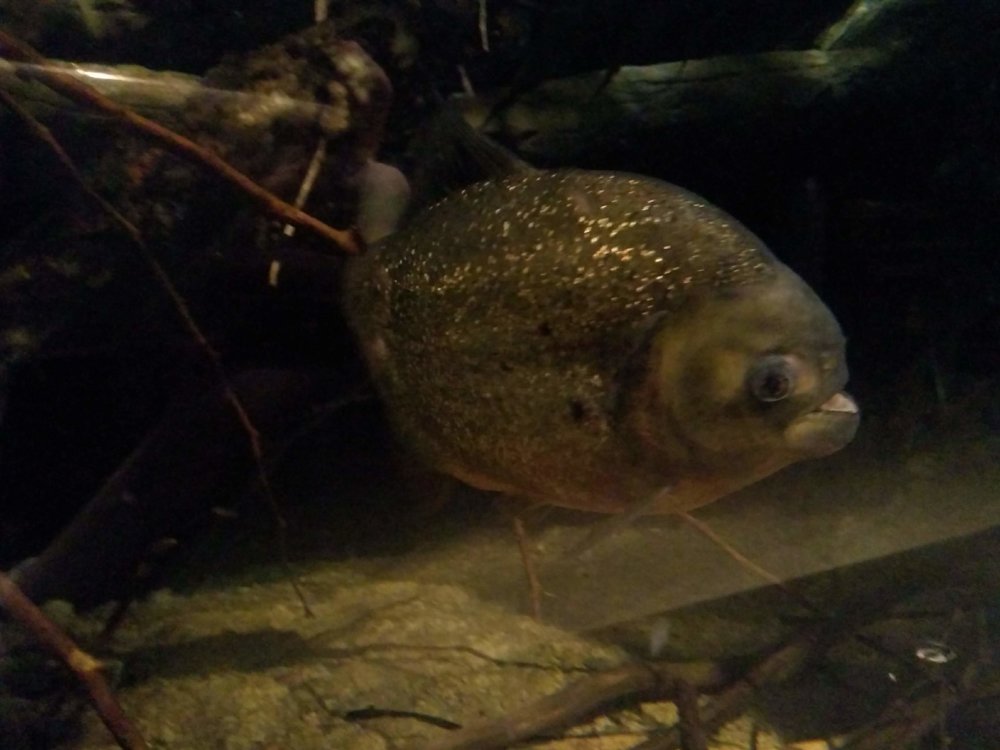
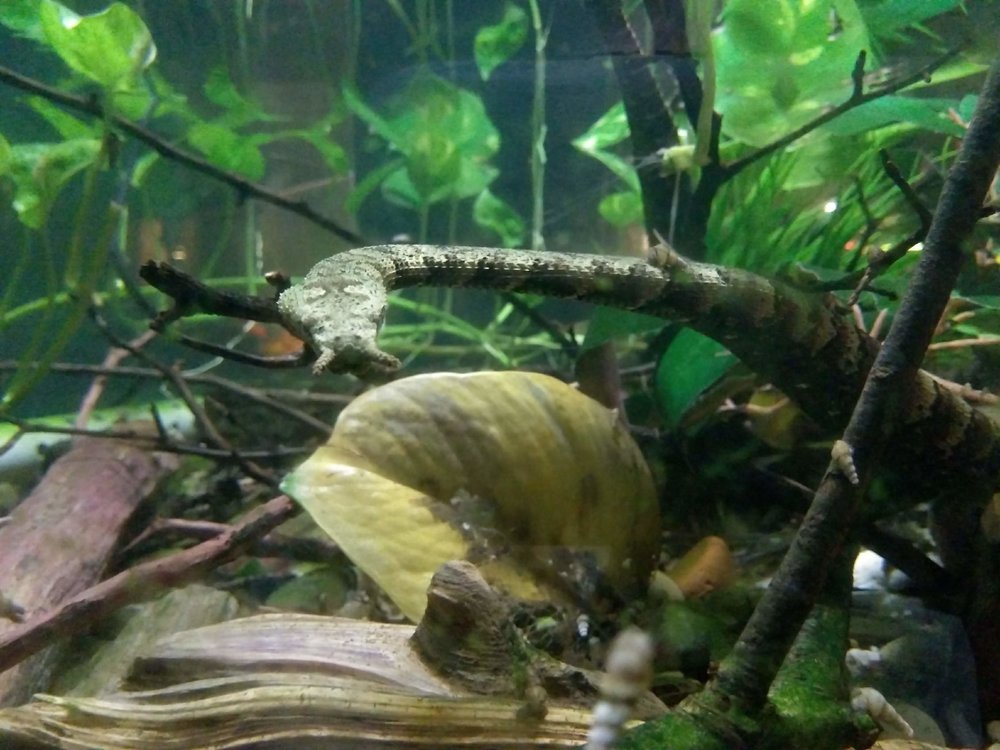
I had the pleasure (?) of watching the charmingly languid Burmese python, normally draped around her Southeast Asian-inspired habitat, put on quite the show when one of her care-takers gave her a snack- two deceased white rats.
While reptiles and amphibians certainly enjoy a place of prominence in the Lower Forest, other rain forest wildlife make a pretty addition.
Bats flutter in a large, darkened display, leaf cutter ants scurry up and down a system of tunnels and pipes, and Indian-crested porcupines meander in the large central display, where a tropical rainstorm rumbles through every twelve minutes, complete with wind, rain, thunder and lightning.
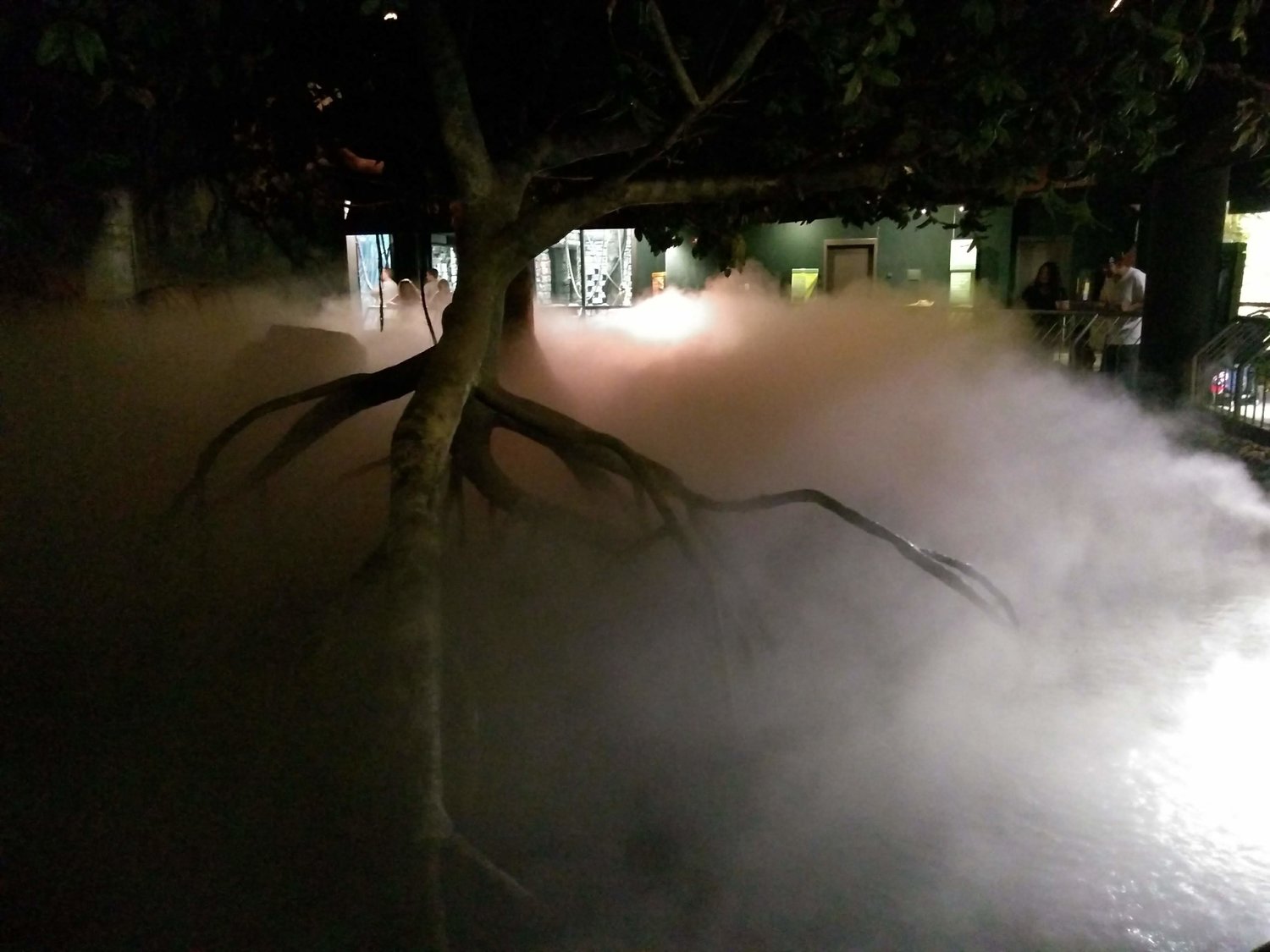
Left to right: bat nap; leaf cutter ants; central exhibit before (or after?) the storm; Indian crested porcupine.

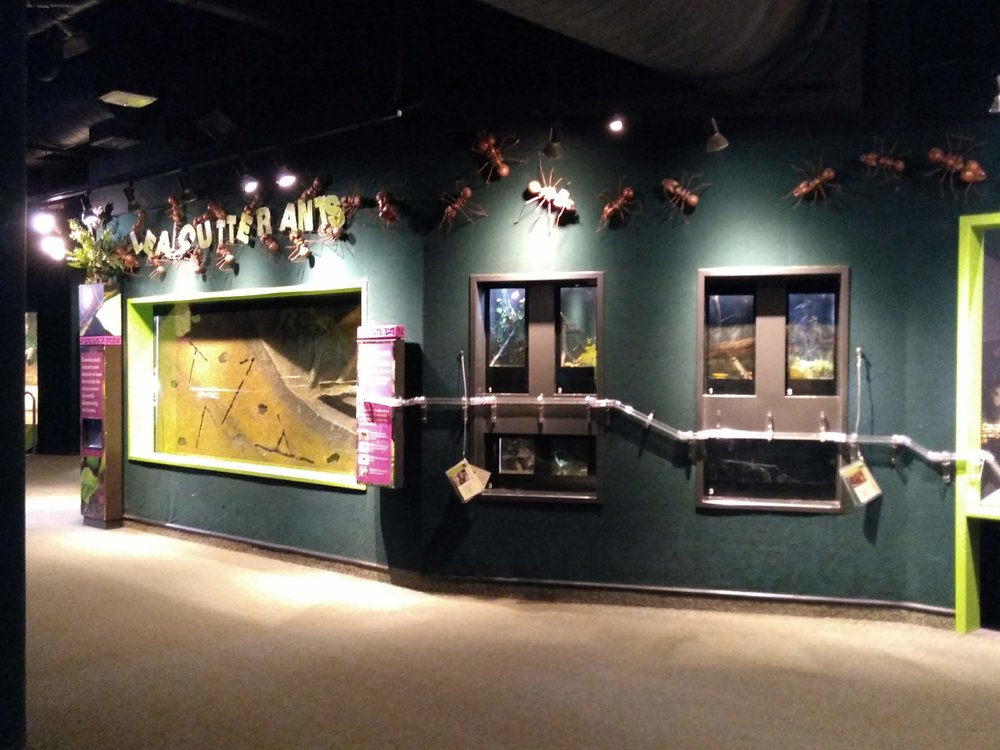
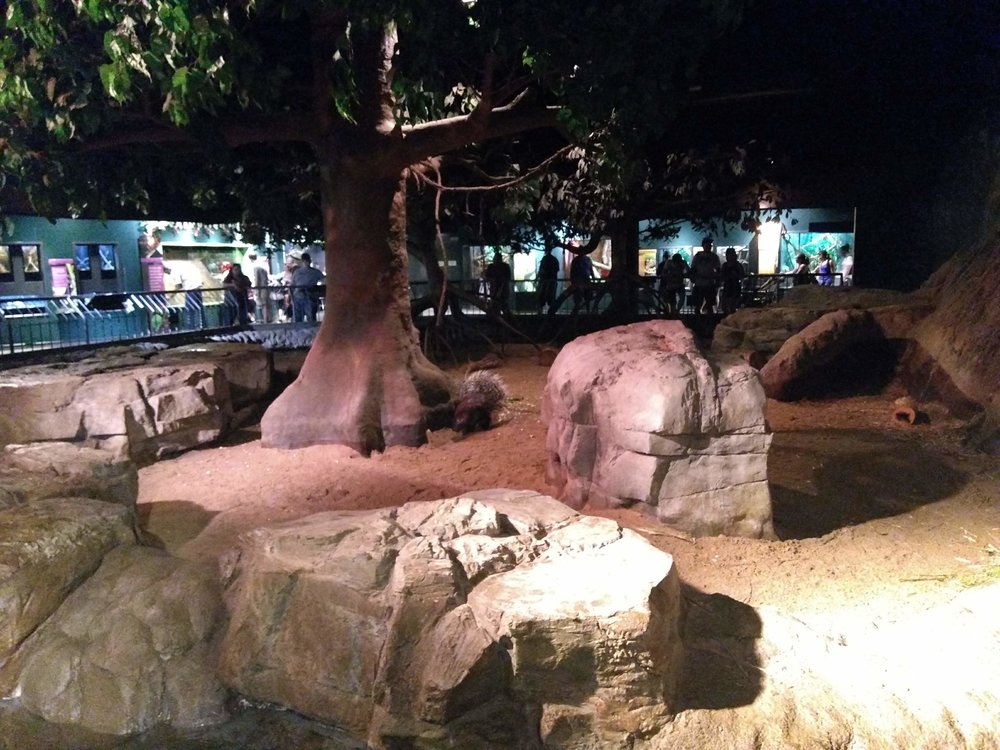
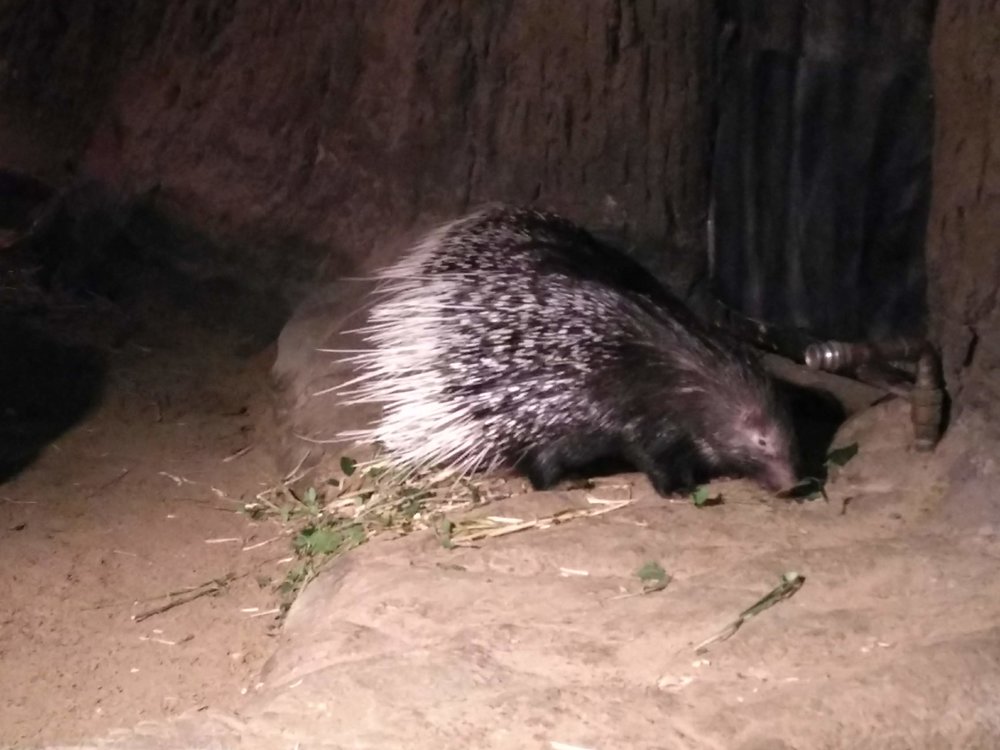
Coming around the porcupine exhibit we find ourselves at the end of the Lower Forest, where the RainForest makes a bid for conservation efforts and preservation for the world’s rain forests. After immersing ourselves in the Upper and Lower levels of the “rain forest,” such an appeal is not likely to fall on deaf ears- it is hard to harbor a stony heart after coming face-to-face with the zoo’s inhabitants, representing their endangered cousins in the wild.
Exiting the Lower Forest, we pass through the base of the Francois monkey’s habitat, peering upwards for a final glimpse of the graceful primates. A sign opposite reminds us how we can ensure that they will continue to remain a part of our earth, sending us off on an optimistic note.
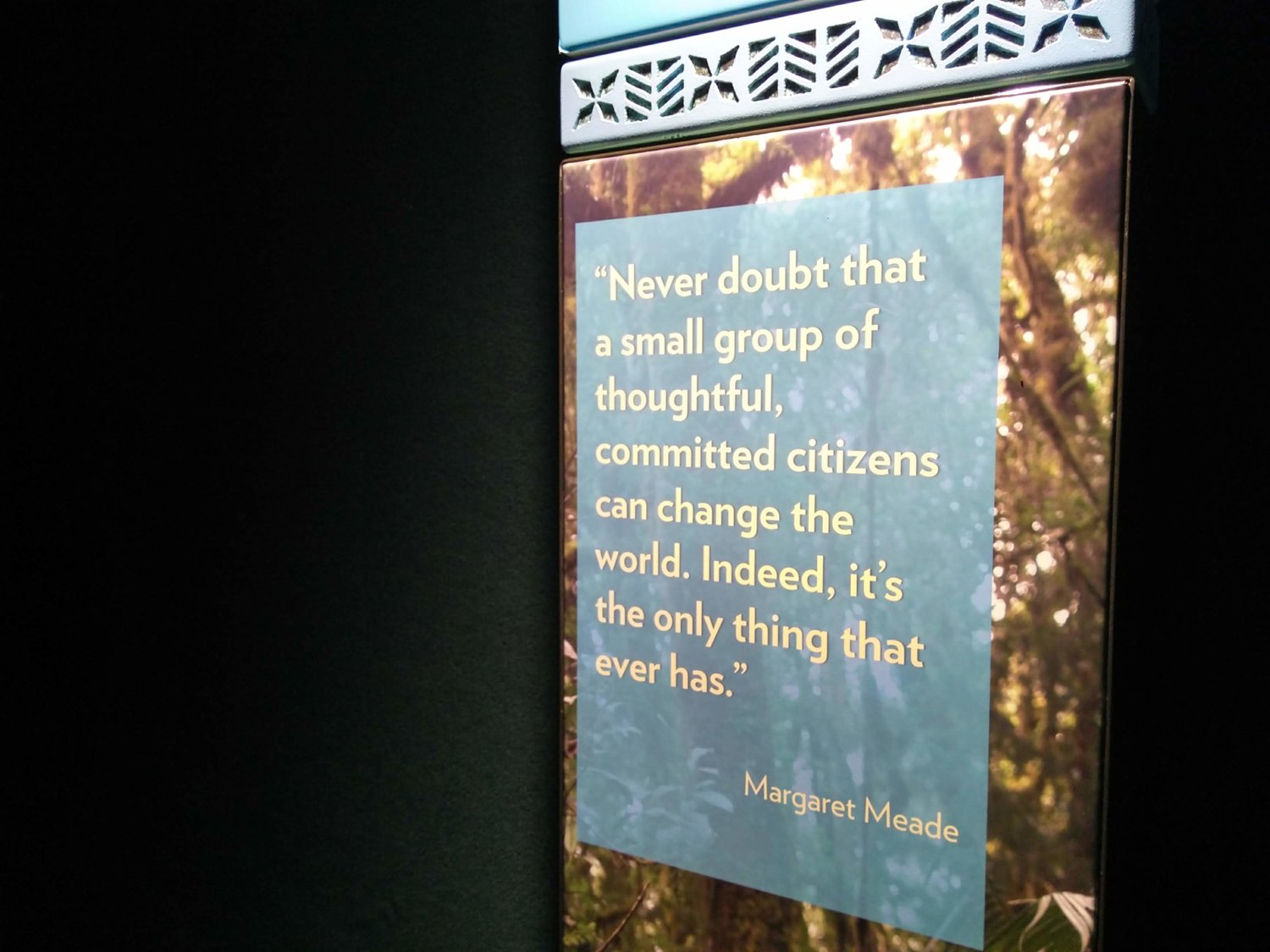
As we step out of the exhibit and into whatever weather Cleveland has decided to provide us with that day, though the roar of the waterfall fades away, what we saw and what we learned will stay with us. And, if our memory should happen to get hazy, there’s always the possibility of a return visit, come rain or shine.
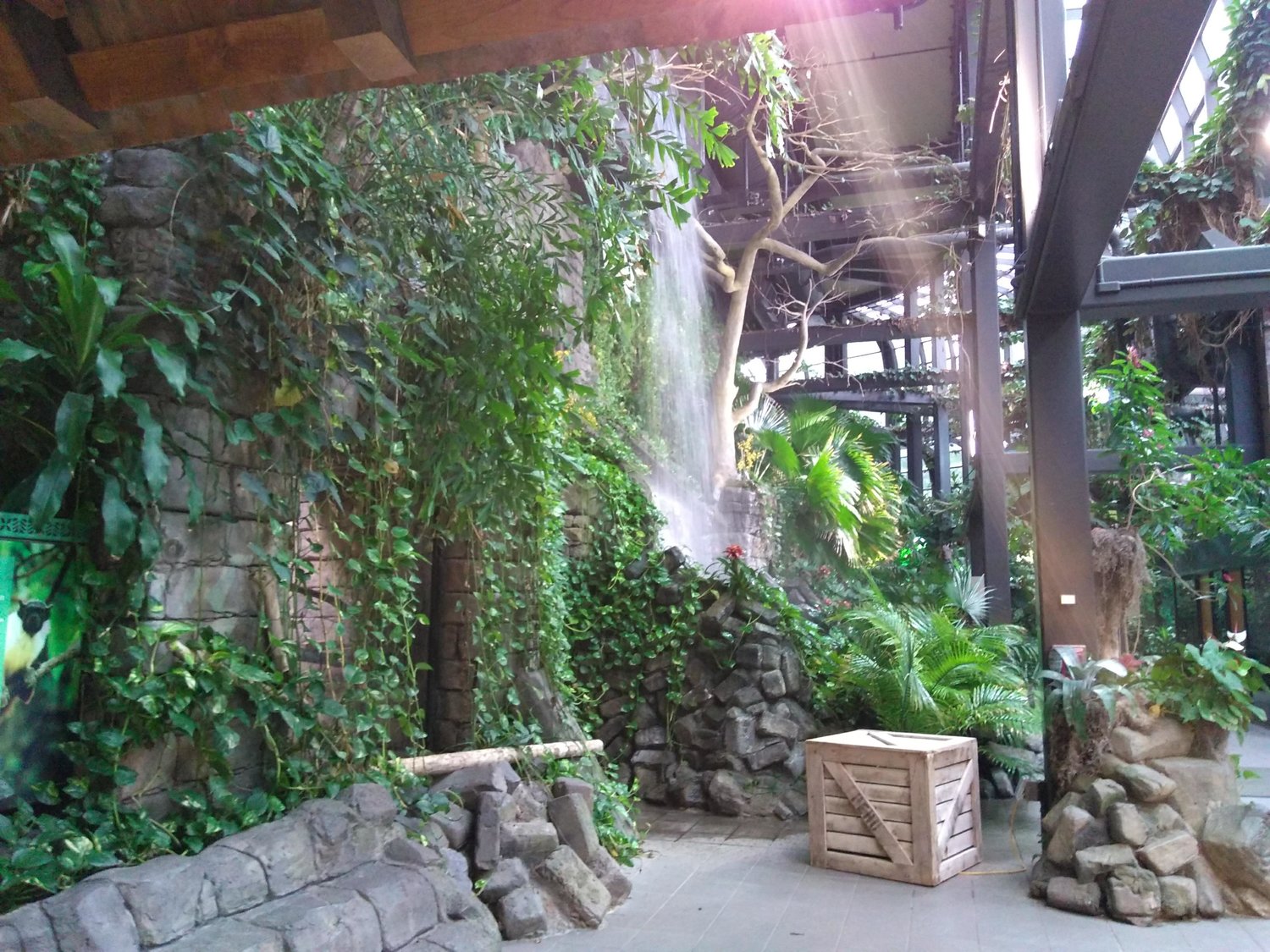
Additional Reading:
https://www.cleveland.com/insideout/index.ssf/2016/03/plantsandvinesatclevelandmetroparkszoosrainforestcreateexuberantjunglephotos.html_
https://www.clevelandmetroparks.com/news-press/2014/october-2014/baby-orangutan-born-at-cleveland-metroparks-zoo
https://www.clevelandmetroparks.com/parks/learn/blogs/notes-from-the-field/2014/february-2014/a-cleveland-metroparks-winter-gem-the-rainforest
https://www.wkyc.com/article/news/local/cleveland-metroparks-zoo-extends-legacy-impact-of-the-rainforest/95-494223843
https://www.clevelandzoosociety.org/who-we-are/history-accomplishments
https://www.cleveland.com/metro/index.ssf/2012/11/zoosrainforeststillpacksem.html
